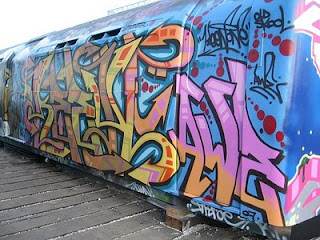The experience has brought to my attention that art can be in any form. At first, I did have a slight idea of the different elements of art, but I never knew how all of them are connected in a way. For example dance and drawing are two completely different art elements, but they share the same idea of expression and feeling. Dance displays its expression through the movement of the body while drawing displays it's own through pictures. The same thing goes with music and poetry. To me, music is poetry, but with a rhythmic beat added on with it's lyrics. Art can be expressed through almost anything, it's all about how a person perceives it.
Doing research on my topic I learned different techniques like scraping and layering with the oil pastels. This helps the picture to show vivid details and more colors because oil pastels are hard to work with when one is trying to draw a figure. I've also learned the basic elements of dance (BASTE) and how two bodies can move as one with the right exercises, time, and energy. I find that interesting because two people dancing can either look sloppy or organized; when it is organized it seems like they share one mind and move so swiftly.
Another thing I enjoyed was looking at other people's artwork in my community. By doing that, it helped me to gain new ideas about my own drawings and also leads me to experience medias in art like sand art, snow art, or even using chalk on the sidewalk instead of paper. I can image how my skillful chalk drawings would look on the streets in the public; and not only would I be doing what I love to do, but I'd be sharing my talents with other people who walk past my work.
Before all of the blogging, I used to just use other people's works as reference's and draw the exact same thing as another artist. Now I expand my mind and try to make my work original (oil pastel taught me the originality part because it falls under the "impressionist" art) as much as possible. I started practicing free-form drawings and being more original with pen, which are the images you see below.
I recently just thought about making a post about pen drawings, it came to mind last minute. Maybe I will continue with this blog and make a post about it in the near future.Though I didn't get the chance to make a post about pen drawings, I can still show people what I can do with just a regular ball-point pen.
.JPG)




































